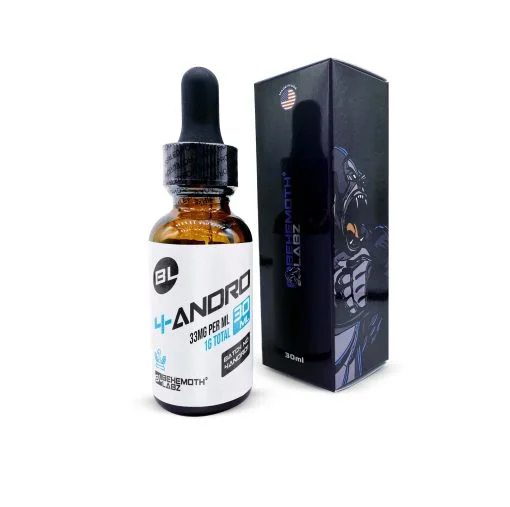SARMs
Ostarine vs RAD 140 | Which SARM is Better
These SARMs are popular for research studies. However, there is still controversy over Ostarine Vs RAD 140, and people often want to know which one is better. This blog clearly explains the major differences between the two. Keep reading this blog!
What are Ostarine and RAD 140?
Ostarine (MK-2866) is one of the most researched selective androgen receptor modulators (SARMs) with phase 2 clinical trials. It is being widely studied in research subjects for its potential effects.
On the other hand, RAD 140, also known as Testolone, is one of the strongest SARMs but only with phase 1 clinical trials. RAD 140 reportedly shows increased muscle mass and strength improvements in experimental models. It is also regarded as the best SARM for “look” due to its unique dry look.
How do Ostarine and RAD 140 Work?
Both SARMs have the same mechanism of action. Ostarine and RAD 140 work by selectively targeting androgen receptors in specific tissues of research subjects. Clinical investigations show that they bind to these proteins and stimulate anabolic responses. However, their time of action may differ, and Testolone is considered to be more potent and works faster than Ostarine.
Ostarine Vs RAD 140: How do they differ?
Below are key differences in the benefits, dosage, side effects, and half-life that set both Ostarine and RAD 140 apart.
Difference in Dosage & Cycle
Generally, Ostarine has a recommended starting dose of 5-25mg daily for conducting studies on research subjects. Its average cycle is 4-8 weeks, which is often followed by post-cycle therapy (PCT).
Being a potent SARM, RAD 140 has generally required careful use while investigating it. The initial dose that is recommended for studies is 10-30mg daily, followed by PCT.
Ostarine Vs RAD 140 – Side Effects
In showing benefits in research studies, RAD 140 wins. However, we have to consider all of the possible effects that these two SARMs have on subjects.
Both carry some potential side effects, but Testolone is considered to have a slightly higher risk, especially when used in higher doses.
The side effects of both SARM profiles are mentioned below.
- Testosterone Suppression in Research Subjects: Research studies have deduced that Ostarine may not suppress testosterone levels as much as Testolone. RAD 140 may majorly suppress testosterone levels, especially when used in higher doses as per research studies. This can be avoided if RAD 140 is used in low dosage.
- Aggression: RAD 140 might cause more aggression as shown in some clinical investigations compared to Ostarine which shows mild symptoms of aggression.
Half-Life in Research Subjects
Ostarine has a half-life of 24 hours in research subjects. It means that a daily dose is required to be administered. While on the other hand, RAD 140 has a half-life of 60 hours. It requires less frequent dosing to maintain effective concentration.
Similarities Between Ostarine and RAD-140
Ostarine and RAD 140 are two SARMs with different levels of effects on subjects. Still, some similarities have been identified between them in various clinical investigations.
Which SARM is the Best Choice
Both are powerful. The best choice depends on your study, experience, and research objectives.
If you want a more versatile and mild SARM, Ostarine might be a better option. If you are seeking to investigate quick results, RAD 140 is the best choice.
FAQs
What is the best place to buy Ostarine and RAD-140 online?
To buy Ostarine and RAD 140 online with premium quality, BehemothLabz is the best option. It provides standard and active products for research studies. It is also one of the top vendors to ensure 100% pure quality with trusted and reliable customer service.
Is it possible to stack Ostarine with RAD-140?
Yes, it is possible to stack Ostarine with RAD 140.
Does RAD140 ruin the testosterone of research subjects?
Yes, RAD 140 can suppress testosterone in test subjects, especially when used in high amounts.
Does Ostarine lower the testosterone levels of research subjects?
Yes, but Ostarine is reported to cause less testosterone suppression compared to RAD 140.
References
- Efimenko, Iakov V., et al. “Analysis of the growing public interest in selective androgen receptor modulators.” Andrologia 53.11 (2021): e14238.
- Bohlin, Kim Petterson, et al. “Detection of anabolic agents including selective androgen receptor modulators in samples outside of sport.” Drug Testing and Analysis 16.8 (2024): 827-834.
- Loss, Fat. “RAD-140 Review: Benefits, Dosage & Side Effects.











